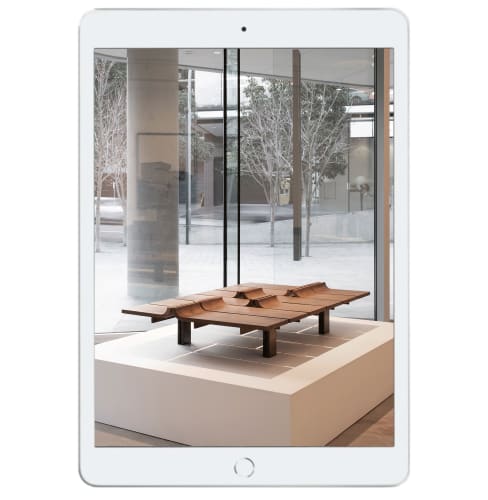Shifting between architectural photography, interior design, furniture and lighting, Don Cameron’s typologically diverse body of work belies its layered connections.
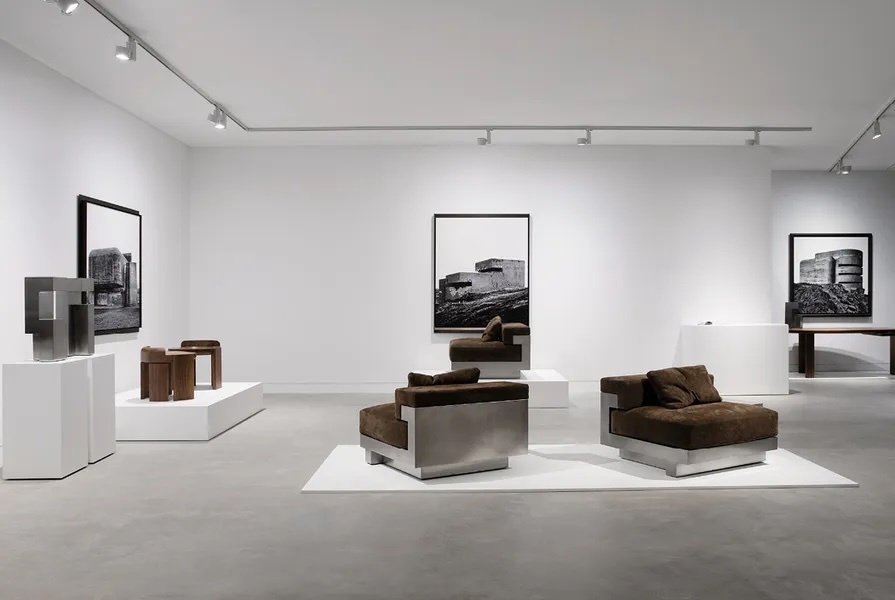
At his 2022 exhibition Translations, at Gallery Sally Dan-Cuthbert, Cameron expressed his appreciation for brutalist architecture, first through photography, and second, through furniture and lighting.
To create his multifaceted oeuvre, artist and designer Don Cameron turns to pure forms that require discipline to achieve. Brutalist structures captured in black and white photography hint at the emotive power of history, while mirrored aesthetics in sculptural furniture represent memory and architecture through balance and symmetry.
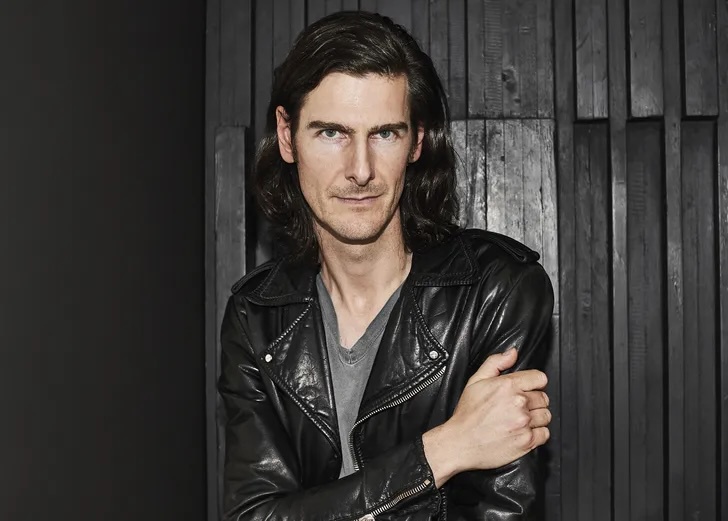
Don Cameron. Image: Anthony Geernaert
Graduating from Central Saint Martins at the University of the Arts London, Cameron launched his career in music video direction, with highlights such as shooting Simply Red’s “Sunrise” in Oscar Niemeyer’s Casa das Canoas in Rio. After moving back to Australia, he turned to interiors for high-profile projects like the Kidman/Urban Sydney penthouse, before blending collective inspirations into furniture and art. Today, showing with Sydney gallerist Sally Dan-Cuthbert, he has found an avenue to evolve these professions and varied practices.
Known for their elevation of furniture and objects as collectable art, Gallery Sally Dan-Cuthbert fosters relationships between collectors and artists at the boundaries of the multifaceted. Cameron was first introduced to Dan-Cuthbert after he completed Braelin, the art-filled home of leading art collectors and philanthropists Gene and Brian Sherman.
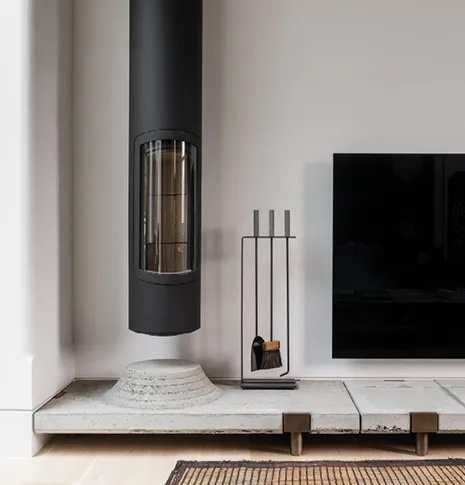
Cameron’s holistic approach to Braelin, the home of two art collectors, combined vintage and contemporary pieces with bespoke designs, including a concrete and bronzed brass fire hearth. Image: Ross Honeysett
Cameron designed every aspect of this interior project, from dressing tables to wall units and window blind systems, or sourced vintage pieces, inviting historic and contemporary design into direct dialogue. For the final element, a constructed sculptural fire hearth commission was informed by a roadside crash barrier and a concrete column in a basement car park. He muses, “Form-finding in unrelated objects is a constant source of inspiration … Materiality and patination add sensuality to an object and contribute greatly to how it is read.”
His debut exhibition at Gallery Sally Dan-Cuthbert, Communion (2020), had its foundation in 20 years of research and practice. In a series of wall works, Cameron turned a lens to built-concrete forms and their potential as sculpture, using photography to capture unusual twentieth-century architecture, in which he shares “feelings of sanctuary, dread, protection, and awe conveyed through mass, form and framing.”
His second show, Translations (2022), shown at Gallery Sally Dan-Cuthbert and at Melbourne Design Week, posed an opportunity to revisit the atmospheres and mood of the prior body of work through sculptural furnishings that add objectivity to an interior; the Bloc sofa can exist “dressed” and functional or raw as pure sculpture. “ Translations aimed to work together to create an environment,” says Cameron. “The design objects were presented alongside the photographic works that gave birth to each idea — be it the form, the surface patina, or the atmosphere they intended to convey.”
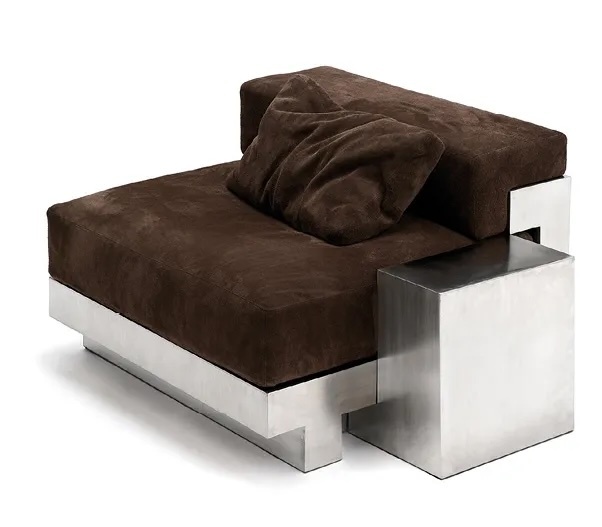
The geometric building captured in “Jersey II” informed the Bloc floor lights and sofa. While functional, Bloc pieces also serve as sculptures (removing the upholstery reveals their pure forms). Image: Cameron’s photography and design collections are represented by Gallery Sally Dan-Cuthbert
Cameron says this combination of art as design, and design as art, is not a novel concept. “When you have done both, you understand how freely you employ elements of each discipline to create stronger works,” he reflects. “If you do one creative thing, it’s atypical to separate it from another.”
Art, design and music are linked throughout his practice. The building in Cameron’s “Neviges” artwork from his Communion series is being used as a performance location by Pina Bausch Tanztheater later this year, for a piece choreographed by Boris Charmatz. Cameron reveals, “Choreography has long been an integral component of the music videos I directed – particularly Blur’s “Music Is My Radar” and the Pet Shop Boys’ “Minimal.” I will surely return to use it again in the context of the gallery space.”
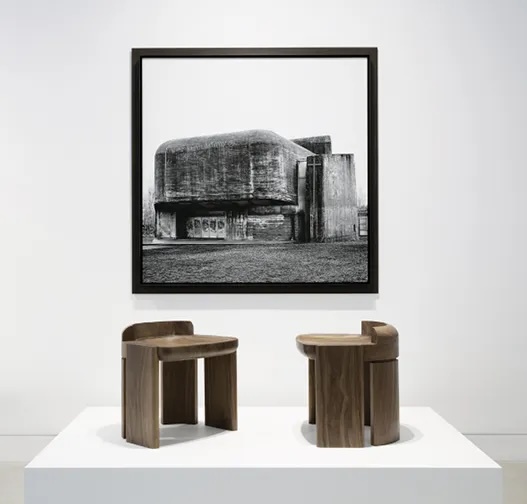
The creative feedback loop between Cameron’s works of art and design is evident at Translations. Image: Don Cameron
For Cameron, exhibitions have become a reference point, “dimensionally moving from architecture to image, image to object.” He is currently interrogating pieces from Translations using different materials, from walnut/bronzed brass to ceramic/bronzed brass, and travelling to Italy to explore new ideas, visit collectors and make introductions to workshops and skilled fabricators. As his practice proves, inspirations and influences can strike from anywhere. The impact of travel, design, art, music and culture are all entwined and interlinked throughout Cameron’s enduring career and his commitment to many crafts.
